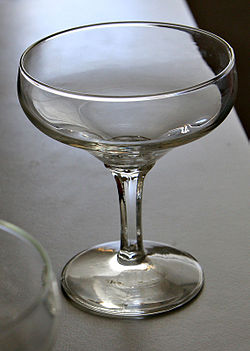
This list of glassware includes drinking vessels (drinkware), tableware used to set a table for eating a meal and generally glass items such as vases, and glasses used in the catering industry. It does not include laboratory glassware.

This list of glassware includes drinking vessels (drinkware), tableware used to set a table for eating a meal and generally glass items such as vases, and glasses used in the catering industry. It does not include laboratory glassware.

Drinkware, beverageware (in other words, cups, jugs and ewers) is a general term for a vessel intended to contain beverages or liquid foods for drinking or consumption. [1]
The word cup comes from Middle English cuppe, from Old English, from Late Latin cuppa, drinking vessel, perhaps variant of Latin cupa, tub, cask. [1] The first known use of the word cup is before the 12th century. [3]


Tumblers are flat-bottomed drinking glasses.



